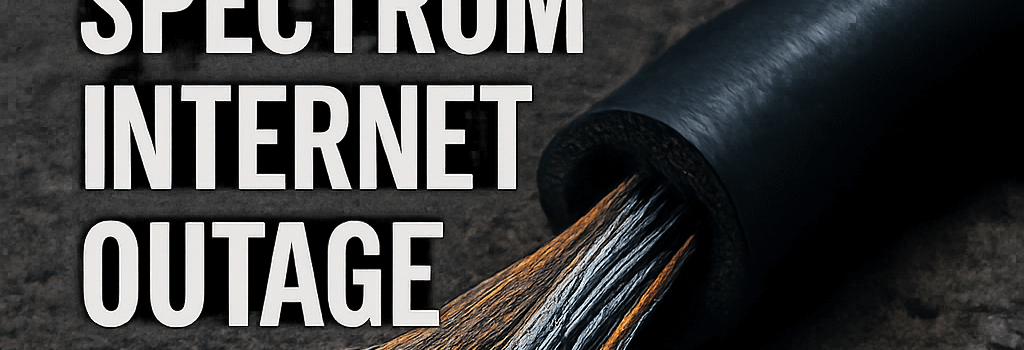Vandals Cut Fiber, Causing Spectrum Internet Outage

Date: June 16, 2025 • By: Dan Goodin
Incident Overview
Over the weekend, thousands of Spectrum Internet subscribers in Van Nuys and nearby neighborhoods experienced service disruptions when vandals cut into fiber‐optic lines, mistakenly believing they were stealing copper cables. The incident, located about 20 miles north of downtown Los Angeles, caused widespread outages starting just before noon on Sunday and lasting roughly 12 hours before normal complaint levels resumed, according to Downdetector.
“These acts of vandalism are not only a crime, but also affect our customers, local businesses and potentially emergency services,” Spectrum officials said in a statement.
Technical Breakdown: Fiber vs. Copper Networks
While copper has historically been used for power transmission and data lines due to its excellent conductivity, modern ISPs like Spectrum and AT&T are rapidly migrating to single-mode and multi-mode fiber-optic cables because of their superior bandwidth, lower attenuation, and immunity to electromagnetic interference.
- Bandwidth: Fiber supports up to 400 Gbps per strand, compared to copper’s practical cap of 10 Gbps with high-end twisted pair.
- Latency & Distance: Fiber maintains signal quality over tens of kilometers without repeaters, whereas copper requires energized devices every few hundred meters.
- Security & Theft Risk: Fiber has no precious metals, making it less attractive to metal thieves than copper, which trades at ~$4.50 per pound in mid-2025.
Restoration Efforts and Customer Compensation
Spectrum dispatched specialized splicing crews who rejoined over 3,000 individual fibers using fusion splicers with sub-0.05 dB loss per joint. Service was fully restored by late Sunday, and affected customers received a one-day service credit on their next bill. The company also announced a $25,000 reward for information leading to the arrests of those responsible and has intensified collaboration with local law enforcement.
Industry Context: Rising Metal Theft Trends
From plumbing to telecom, copper theft has spiked over the past two decades as copper prices climbed due to global supply constraints and high industrial demand. The FBI raised an alarm in 2008 about infrastructure vulnerability, and by 2015, AT&T reported a 1,200-foot fiber cut—possibly by thieves targeting non‐existent copper—that required re-fusing 192 fiber strands.
Additional Analysis
1. Emerging Anti‐Theft Technologies
Telecom operators are deploying:
- RFID Tags & GPS Trackers: Embedded in conduit and splice closures for real‐time location tracking.
- Smart Surveillance: AI‐powered cameras with anomaly detection to spot unauthorized personnel near cable vaults.
- Fiber‐Leak Monitors: Optical time‐domain reflectometry (OTDR) systems that trigger alerts upon unexpected physical disruptions.
2. Regulatory and Policy Measures
Federal and state agencies are considering:
- Stricter penalties for network vandalism under infrastructure protection acts.
- Mandating metal recyclers to log seller IDs and transaction metadata to deter copper fencing.
- Grants for small ISPs to upgrade to fiber and integrate anti‐tamper sensors.
3. Expert Perspectives
Dr. Elena Martinez, Telecom Security Analyst at TechSafe Labs: “Fiber’s immunity to theft makes it the future of broadband, but operators must invest in endpoint security and rapid detection to combat evolving vandalism tactics.”
Mark Liu, Infrastructure Manager at ConnectCorp: “Integrating OTDR with our network operations center has reduced outage detection time from hours to minutes, significantly mitigating customer impact.”
Looking Ahead
As ISPs continue transitioning to all‐fiber networks—AT&T announced full copper retirement by 2027—the focus shifts to securing fiber infrastructure. Combining advanced monitoring, stricter regulation, and community awareness campaigns will be key to protecting the nation’s digital backbone.